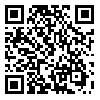1. Karchani M, Ebrahimi A. The Survey of occupational stress, effective factors and relation it with fields human errors on staff of hospital. Iranian Safety Science and Technology Journal. 2015;2(4):49-58.
2. Gerber M, Pühse U. "Don't crack under pressure!"-Do leisure time physical activity and self-esteem moderate the relationship between school-based stress and psychosomatic complaints? Journal of psychosomatic research. 2008;65(4):363-9. [
DOI:10.1016/j.jpsychores.2008.06.012] [
PMID]
3. Hoboubi N, Choobineh A, Ghanavati FK, Keshavarzi S, Hosseini AA. The impact of job stress and job satisfaction on workforce productivity in an Iranian petrochemical industry. Safety and health at work. 2017;8(1):67-71. [
DOI:10.1016/j.shaw.2016.07.002] [
PMID] [
PMCID]
4. Seaward BL. Managing stress: Jones & Bartlett Learning; 2017.
5. Mesler R, Capobianco M. Psychosocial factors associated with job stress. Stress news. 2001;13(4):22-4.
6. Lambert EG, Qureshi H, Frank J, Klahm C, Smith B. Job stress, job involvement, job satisfaction, and organizational commitment and their associations with job burnout among Indian police officers: A research note. Journal of Police and Criminal Psychology. 2018;33(2):85-99. [
DOI:10.1007/s11896-017-9236-y]
7. Quick JC, Henderson DF. Occupational stress: Preventing suffering, enhancing wellbeing. International journal of environmental research and public health. 2016;13(5):450-459. [
DOI:10.3390/ijerph13050459] [
PMID] [
PMCID]
8. Zargar Balaye Jame S, Daneshvar A. The Relationship Between Job Burnout and Its Dimensions with Job Stress in Isfahan University of Medical Sciences in 2018. Journal of Hospital. 2018;17(3):87-99.
9. Garrosa E, Rainho C, Moreno-Jimenez B, Monteiro MJ. The relationship between job stressors, hardy personality, coping resources and burnout in a sample of nurses: A correlational study at two time points. International journal of nursing studies. 2010;47(2):205-15. [
DOI:10.1016/j.ijnurstu.2009.05.014] [
PMID]
10. Farahani SB, Fotovat B, Abadzadeh P, Hemati A. Study of the role of work ethic on job stress and job burnout (Case Study: Teachers of Physical Education in Tehran Secondary Schools). Journal of Organizational Behavior Management Studies in Sport. 2018;5(1):43-51.
11. Duffy RD, Dik BJ. Research on calling: What have we learned and where are we going? Journal of Vocational Behavior. 2013;83(3):428-36. [
DOI:10.1016/j.jvb.2013.06.006]
12. Dik BJ, Duffy RD. Calling and vocation at work: Definitions and prospects for research and practice. The counseling psychologist. 2009;37(3):424-50. [
DOI:10.1177/0011000008316430]
13. Duffy RD, Sedlacek WE. The presence of and search for a calling: Connections to career development. Journal of Vocational Behavior. 2007;70(3):590-601. [
DOI:10.1016/j.jvb.2007.03.007]
14. Berg JM, Grant AM, Johnson V. When callings are calling: Crafting work and leisure in pursuit of unanswered occupational callings. Organization science. 2010;21(5):973-94. [
DOI:10.1287/orsc.1090.0497]
15. Cousins* R, Mackay CJ, Clarke SD, Kelly C, Kelly PJ, McCaig RH. 'Management standards' work-related stress in the UK: Practical development. Work & Stress. 2004;18(2):113-36. [
DOI:10.1080/02678370410001734322]
16. Azad Me, Gholami Fm. Reliability and validity assessment for the HSE job stress questionnaire. 2011.
17. Dik BJ, Eldridge BM, Steger MF, Duffy RD. Development and validation of the calling and vocation questionnaire (CVQ) and brief calling scale (BCS). Journal of career assessment. 2012;20(3):242-63. [
DOI:10.1177/1069072711434410]
18. Borna M, Pordelan N, Khalijian S, Seyedtalebi M. Interactive Structure And Validity Of The Persian Version Of Calling Scale Midst Medical Students. 2015.
19. Maslach C, Schaufeli WB, Leiter MP. Job burnout. Annual review of psychology. 2001;52(1):397-422. [
DOI:10.1146/annurev.psych.52.1.397] [
PMID]
20. Maslach C, Leiter MP. Understanding the burnout experience: recent research and its implications for psychiatry. World psychiatry. 2016;15(2):103-11. [
DOI:10.1002/wps.20311] [
PMID] [
PMCID]
21. Maslach C, Jackson S, Leiter M. MBI: Maslach burnout inventory: CPP. Incorporated Sunnyvale (CA). 1996.
22. Afshani SA, Jahanbakhsh Ganjeh S, Jahanbakhsh Ganjeh S. The role of organizational commitment, social support, general health and job satisfaction in predicting burnout among the staff of Social security organization at Kohgiluyeh and Boyer Ahmad. Knowledge & Research in Applied Psychology. 2017;18(2):72-81.
23. Hajloo N. The Relationship Of Staffs'job Stress, Burnout, And Life Quality To Organizational Climate Satisfaction At Mohaghegh Ardabili University. 2012.
24. Rahmani F, Behshid M, Zamanzadeh V, Rahmani F. Relationship between general health, occupational stress and burnout in critical care nurses of Tabriz teaching hospitals. 2010.
25. Shakerinia I, Mohammadpour M. Relationship between job stress and resiliency with occupational burnout among nurses. J Kermanshah Univ Med Sci. 2010;14(2):161-9.
26. Gashmard R, Bagherzadeh R, Pouladi S, Akaberian S. Burnout and its related demographic factors among the medical staff working in hospitals associated with Bushehr University of Medical Sciences. Puerto Rico health sciences journal. 2015;34(4):208-14.
27. Watson R, Deary I, Thompson D, Li G. A study of stress and burnout in nursing students in Hong Kong: a questionnaire survey. International journal of nursing studies. 2008;45(10):1534-42. [
DOI:10.1016/j.ijnurstu.2007.11.003] [
PMID]
28. Jamal M, Baba VV. Job stress and burnout among Canadian managers and nurses: an empirical examination. Canadian journal of public health. 2000;91(6):454-8. [
DOI:10.1007/BF03404828] [
PMID] [
PMCID]
29. Gholami T, Heidari Pahlavian A, Akbarzadeh M, Motamedzade M, Heidari Moghadam R. A structural equation modeling study of job stress and musculoskeletal disorders. Iranian Journal of Ergonomics. 2015;3(3):51-64.
30. GolMohammadian M, Sajjadi SN, Salimi H. The Role of Psychological Capital and Organizational Citizenship Behavior in Predicting Job Satisfaction of Exceptional Elementary School's Teachers. Exceptional Education Journal. 2016;3(140):5-12.
31. Alipour A, Sarami Forushani G, Agha Alikhani A, Akhundi N. Evaluation of the effectiveness of psychological capital intervention of luthans on job burnout in the experts working in Iran Khodro Diesel company. Occupational Medicine Quarterly Journal. 2013;5(3):30-41.
32. Luthans F, Avey JB, Avolio BJ, Peterson SJ. The development and resulting performance impact of positive psychological capital. Human resource development quarterly. 2010;21(1):41-67. [
DOI:10.1002/hrdq.20034]
33. Pasha N, Shakerinia I, Abolghasemi A. The Relationship of Organizational Citizenship Behaviors, Organizational Spirituality and Social Capital with Employees' Counterproductive Behaviors. Psychology. 2017;4(1):91-111.
















































